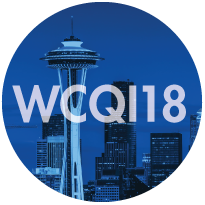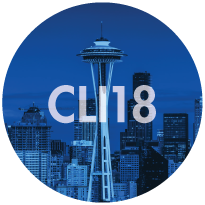16 Posts
ASQ Team,
As quality professionals, we have an opportunity to assist in battling the current outbreak.
The general public is being provided basic guidelines such as avoid going out in public, washing hands, don't touch the face, & maintain 6 ft distance from others. However, these common recommendations fall short of what people can do to interrupt the process of viral transmission.
We can provide more in-depth recommendations to the public to stop the spread, & in doing so, protect ourselves, & highlight the value of ASQ to the community.
I am proposing we quickly collaborate, agree upon & officially release a short set of additional recommendations such as:
1) Strict avoidance of public areas
2) Scrubbing all surface areas of hands & fingers for at least 20 seconds, using a paper towel to turn off manual water faucets.
3) Disinfecting all common touch points (light switches, counter tops, door knobs, etc.) every day.
4) Avoiding wearing rings, watches & bracelets in public; these areas where viruses & bacteria can avoid decontamination.
5) Disinfecting our phones at least once a day.
6) Designating one person to make necessary trips in public.
7) Refrain from wearing gloves in public. Use hand sanitizer, & scrub hands as soon as possible.
8) Wearing a mask (barrier) when in public to reduce transmission or spread of contagions (CDC is currently recommending covering with a bandana or scarf if nothing else is available https://www.cdc.gov/coronavirus/2019-ncov/hcp/ppe-strategy/face-masks.html). Wash hands & decon mask after removal. Any barrier is better than no barrier.
9) Consider all public places to be contamination points.
This sounds extreme & late in timing, but current measures are insufficient. Can we collaborate on this & release an official ASQ recommendation to the public?
- John Karlin, RNC-NIC, CQPA
As quality professionals, we have an opportunity to assist in battling the current outbreak.
The general public is being provided basic guidelines such as avoid going out in public, washing hands, don't touch the face, & maintain 6 ft distance from others. However, these common recommendations fall short of what people can do to interrupt the process of viral transmission.
We can provide more in-depth recommendations to the public to stop the spread, & in doing so, protect ourselves, & highlight the value of ASQ to the community.
I am proposing we quickly collaborate, agree upon & officially release a short set of additional recommendations such as:
1) Strict avoidance of public areas
2) Scrubbing all surface areas of hands & fingers for at least 20 seconds, using a paper towel to turn off manual water faucets.
3) Disinfecting all common touch points (light switches, counter tops, door knobs, etc.) every day.
4) Avoiding wearing rings, watches & bracelets in public; these areas where viruses & bacteria can avoid decontamination.
5) Disinfecting our phones at least once a day.
6) Designating one person to make necessary trips in public.
7) Refrain from wearing gloves in public. Use hand sanitizer, & scrub hands as soon as possible.
8) Wearing a mask (barrier) when in public to reduce transmission or spread of contagions (CDC is currently recommending covering with a bandana or scarf if nothing else is available https://www.cdc.gov/coronavirus/2019-ncov/hcp/ppe-strategy/face-masks.html). Wash hands & decon mask after removal. Any barrier is better than no barrier.
9) Consider all public places to be contamination points.
This sounds extreme & late in timing, but current measures are insufficient. Can we collaborate on this & release an official ASQ recommendation to the public?
- John Karlin, RNC-NIC, CQPA
12 Replies
52 Posts
I like the idea of this... and I'm not a medical professional, so I can't comment on the validity of your proposal. I've seen other posts from medical professionals recommending the use of gloves, and removing them safely (don't touch with ungloved hand while removing and finish with one glove inside the other, inside out and dispose). Not saying it is correct, just that I am seeing it out there. It may be appropriate to work directly with the Healthcare division to get peer reviewed consensus to your proposal.
27 Posts
Hi John, I would recommend distinguishing between CDC/WHO recommendations and "other considerations"
1. OK
2. OK
3. OK
4. Haven't heard of this one yet - but makes sense to me!
5. OK but would suggest checking with the manufacturer for safe cleaning/disinfecting instructions - avoid ASQ liability.
6. Designating 1 person to make trips - not sure how effective this is - it's all about social distancing , hand and respiratory hygiene. Perhaps limit/ plan trips.
7. Gloves? What type of gloves? Winter gloves, rubber gloves, latex/surgical gloves, work gloves, washable/ non washable?
8. NOOOOOO - there is a mask shortage...Only those that are sick or those working with the sick should be wearing masks. I'd avoid suggesting alternate/ homemade options - may provide a false sense of security. Reference is for Healthcare workers - not the general public.
9. OK
Suggest providing a list of references for the general public - here are some examples:
https://faq.coronavirus.gov/
https://www.cdc.gov/coronavirus/2019-ncov/prepare/prevention.html
https://www.cdc.gov/coronavirus/2019-ncov/prepare/cleaning-disinfection.html
https://www.whitehouse.gov/wp-content/uploads/2020/03/03.16.20_coronavirus-guidance_8.5x11_315PM.pdf
https://www.who.int/health-topics/coronavirus#tab=tab_1
1. OK
2. OK
3. OK
4. Haven't heard of this one yet - but makes sense to me!
5. OK but would suggest checking with the manufacturer for safe cleaning/disinfecting instructions - avoid ASQ liability.
6. Designating 1 person to make trips - not sure how effective this is - it's all about social distancing , hand and respiratory hygiene. Perhaps limit/ plan trips.
7. Gloves? What type of gloves? Winter gloves, rubber gloves, latex/surgical gloves, work gloves, washable/ non washable?
8. NOOOOOO - there is a mask shortage...Only those that are sick or those working with the sick should be wearing masks. I'd avoid suggesting alternate/ homemade options - may provide a false sense of security. Reference is for Healthcare workers - not the general public.
9. OK
Suggest providing a list of references for the general public - here are some examples:
https://faq.coronavirus.gov/
https://www.cdc.gov/coronavirus/2019-ncov/prepare/prevention.html
https://www.cdc.gov/coronavirus/2019-ncov/prepare/cleaning-disinfection.html
https://www.whitehouse.gov/wp-content/uploads/2020/03/03.16.20_coronavirus-guidance_8.5x11_315PM.pdf
https://www.who.int/health-topics/coronavirus#tab=tab_1
16 Posts
Deborah,
4. I work in intensive care, no rings, watches or bracelets is standard infection control practice for us. We have additional restrictions regarding artificial nails, & nail length that I don't think the general public would adhere to.
7. People are being seen wearing any kind of gloves, which is creating a greater cross contamination issue; this is why I did not specify.
8. I expect the CDC to change their recommendations very soon to include everyone wearing a mask when in general public. All public places, particularly grocery stores, are considered contamination points. Community spread needs to be stopped in the community. I work in ICU, direct patient care. The initial announcement for masks to be reserved for front line workers was to ensure we have what we need to do our jobs safely. However, even I am personally hand-stitching makeshift masks from fabric & whatever type of filters I can get my hands on (HEPA vacuum, HVAC with highest MERV rating I can find, surgical instrument wrap, etc), in the expectation of PPE shortage. People are bored; going to the store is unfortunately their new "adventure"; everyone masking up will provide a barrier for both those who are already sick, & for those who are not yet sick. Honestly I think we are a solid month behind on this.
Thank you for looking at this & providing your valuable input! I haven't been successful in contacting our healthcare division.
4. I work in intensive care, no rings, watches or bracelets is standard infection control practice for us. We have additional restrictions regarding artificial nails, & nail length that I don't think the general public would adhere to.
7. People are being seen wearing any kind of gloves, which is creating a greater cross contamination issue; this is why I did not specify.
8. I expect the CDC to change their recommendations very soon to include everyone wearing a mask when in general public. All public places, particularly grocery stores, are considered contamination points. Community spread needs to be stopped in the community. I work in ICU, direct patient care. The initial announcement for masks to be reserved for front line workers was to ensure we have what we need to do our jobs safely. However, even I am personally hand-stitching makeshift masks from fabric & whatever type of filters I can get my hands on (HEPA vacuum, HVAC with highest MERV rating I can find, surgical instrument wrap, etc), in the expectation of PPE shortage. People are bored; going to the store is unfortunately their new "adventure"; everyone masking up will provide a barrier for both those who are already sick, & for those who are not yet sick. Honestly I think we are a solid month behind on this.
Thank you for looking at this & providing your valuable input! I haven't been successful in contacting our healthcare division.
52 Posts
John Karlin Deborah is from the healthcare division leadership. Also tagging Susan Peiffer.
61 Posts
This is a pretty good list of all things COVID that I received from the Northwest Wisconsin Healthcare Emergency Readiness Coalition:
| TOPIC | QUESTION | ANSWER | ADDITIONAL RESOURCES |
| Signs & Symptoms | What are the signs and symptoms of COVID-19? | Reported illnesses have ranged from mild symptoms to severe illness and death for confirmed COVID-19 cases. The following symptoms may appear 2-14 days after exposure:
|
https://www.cdc.gov/coronavirus/2019-ncov/symptoms-testing/symptoms.html |
| Should I be tested for COVID-19? | If you develop symptoms such as fever, cough, and/or difficulty breathing, and have been in close contact with a person known to have COVID-19, or have recently traveled from an area with ongoing spread of COVID-19, stay home and call your healthcare provider. Older patients and individuals who have severe underlying medical conditions or are immunocompromised should contact their healthcare prover early, even if their illness is mild. | See CDC FAQ’s on COVID-19: https://www.cdc.gov/coronavirus/2019-ncov/faq.html |
|
| Prevention & Control | How can I protect myself and others from contacting COVID-19? | The following is a list of steps from the CDC that a person may use to protect themselves and others from getting sick:
|
Additional information on handwashing can be found at: https://www.cdc.gov/handwashing/index.html Videos on handwashing can be found at: https://www.cdc.gov/handwashing/videos.html When and how to wash hands: https://www.cdc.gov/handwashing/when-how-handwashing.html |
| What are steps I can take to reduce worker exposure at my facility? | OSHA recommends the following basic steps that every employer can take to reduce the risk of worker exposure:
|
For more information, see OSHA Guidance on Preparing Workplaces for COVID-19: https://www.osha.gov/Publications/OSHA3990.pdf In addition, the CDC offers Interim Guidance for Businesses and Employers |
|
| What strategies or actions should I take if an employee shows up to work and appears to be sick? | The CDC recommends the following strategies for employers to implement in the workplace now:
|
Place posters that encourage proper etiquette in work areas where they are likely to be seen. Posters include: -Staying home if you’re sick -Coughing & Sneezing etiquette -Hand Hygiene More information can be found on the CDC website |
|
| Sanitation / Environmental Cleaning | What is the proper way to clean or disinfect my facility? | Routinely clean all frequently touched surfaces in the workplace, such as workstations, countertops, and doorknobs. Use the cleaning agents that are usually used in these areas and follow the directions on the label. Provide disposable wipes so that commonly used surfaces (doorknobs, keyboards, remote controls, desks, etc.) can be wiped down by employees after each use. For disinfection, diluted household bleach solutions, alcohol solutions with at least 70% alcohol, and most common EPA-registered household disinfectants should be effective. |
CDC has listed Interim Recommendations for Cleaning & Disinfecting Households with Suspected/Confirmed COVID-19. Some recommendations may be applicable to your workplace. See EPA’s List N: Disinfectants for Use Against COVID-19 More information regarding Disinfectants against COVID-19 can be found at EPA’s FAQ’s: https://www.epa.gov/pesticide-registration/frequently-asked-questions-about-list-n-disinfectants-use-against-sars-cov-2 |
| Recordkeeping Requirements | Is employee exposure to COVID-19 recordable? |
COVID-19 can be a recordable illness if a worker is infected as a result of performing their work-related duties. However, employers are only responsible for recording cases of COVID-19 if ALL of the following are met:
|
For more information, see OSHA’s webpage on Injury and Illness Recordkeeping and Reporting Requirements: https://www.osha.gov/recordkeeping/ |
| How do I record an employee illness related to COVID-19? | Employers should record workplace illnesses as a result of COVID-19 on the facility’s OSHA 300 Log and related forms. | A brief tutorial on completing the recordkeeping forms can be found at: https://www.osha.gov/recordkeeping/tutorial.html |
|
| Do I need to report a confirmed case of COVID-19 to OSHA? | If an employee has a confirmed case of COVID-19 that is considered work-related, an employer would need to report the case to OSHA if it results in a fatality or in-patient hospitalization of one or more employees.
|
See Reporting a Fatality or Severe Injury: https://www.osha.gov/report.html |
|
| Personal Protective Equipment (PPE) | What type of PPE should employees wear at my workplace? | Employers are obligated to provide their workers with PPE needed to keep them safe while performing their jobs. The types of PPE required during a COVID-19 outbreak may very based on employee job duties, potential exposures, and specific Job Hazard Analyses. Healthcare workers, Laboratory workers, First-Responders, persons conducting cleaning/disinfecting of contaminated surfaces, etc. may all be required to wear PPE. Employers should assess the hazards to which their workers may be exposed, and determine the necessary PPE to prevent exposure. Examples of PPE include but are not limited to: -Gloves -Glasses/Goggles -Face Shields/Face Masks -Respiratory Protection- when appropriate |
See specific OSHA standards regarding additional PPE requirements: PPE- 1910.132 Eye and Face Protection- 1910.133 Hand Protection- 1910.138 Respiratory Protection- 1910.134 |
| Do I need to train employees who are required to wear PPE? | Workers required to use PPE must be trained. This training includes:
|
For more information, see OSHA’s webpage Personal Protective Equipment: https://www.osha.gov/SLTC/personalprotectiveequipment/index.html |
|
| Hazard Communication | How do I protect workers from chemical exposure? | Employers must protect their workers from exposure to hazardous chemicals used for cleaning and disinfection. Employers should be aware that common sanitizers and sterilizers could contain hazardous chemicals. Where workers are exposed to hazardous chemicals, employers most comply with OSHA’s Hazard Communication Standard.
|
See OSHA’s 1910.1200 Hazard Communication Standard for more information: https://www.osha.gov/laws-regs/regulations/standardnumber/1910/1910.1200 OSHA Quick Card- Safety Data Sheet OSHA Quick Card- Labels OSHA Quick Card- Pictogram OSHA Steps to an Effective Hazard Communication Program |
| Respiratory Protection | Should I require employees to wear respirators to protect against COVID-19? | According to OSHA, workers who work within 6 feet of patients known to be, or suspected of being, infected with COVID-19, and those performing aerosol-generating procedures, need to use respirators. Jobs to consider may include healthcare workers, laboratory workers, first responders, etc. Workers who are sick should follow CDC guidelines and stay home when they are sick. Refer to the signs & symptoms category of this document for CDC and OSHA guidance for all other workers who may be sick. |
For more information, see OSHA Guidance on Preparing Workplaces for COVID-19: https://www.osha.gov/Publications/OSHA3990.pdf |
| What is an N95 filtering facepiece respirator (FFR)? | According to CDC, an N95 FFR is a type of respirator which removes particles from the air that are breathed through it. These respirators filter out at least 95% of very small particles. N95 FFR’s are capable of filtering out all types of particles, including bacteria and viruses. | For more information, see CDC’s FAQ About Personal Protective Equipment: https://www.cdc.gov/coronavirus/2019-ncov/hcp/respirator-use-faq.html#respirators |
|
| What requirements apply if my employees voluntarily wear N95 respirators? | According to OSHA, employees may wear respirators voluntarily if the employer determines that the respirator itself will not present:
|
For more information, see: OSHA Publication 3384- Small Entity Compliance Guide for the Respiratory Protection Standard Appendix D to the Respiratory Protection Standard can be found here: https://www.osha.gov/laws-regs/regulations/standardnumber/1910/1910.134AppD In addition, see: 1910.134 Respiratory Protection Standard |
|
| Can employees wear other types of respirators voluntarily? | The employer must ensure that the following elements of the respiratory protection program are implemented for voluntary respirator users other than N95 respirators:
Implementation of the elements of the program for a voluntary respirator user will ensure that the respirator is used properly and does not create a hazard to the user.
|
For more information, see: OSHA Publication 3384- Small Entity Compliance Guide for the Respiratory Protection Standard |
|
| Do I need to have a written respiratory protection program if only voluntary users wear respirators at my facility? | No, if the only respirators being worn are filtering facepieces. Yes, if other respirators, such as elastomeric APRs or powered APRs, are being used voluntarily. In this case, the written program needs to include only the elements that pertain to voluntary users; e.g., a section on medical evaluations, and one on inspection, care and maintenance. When employees choose to voluntarily use respirators in the workplace, the employer must provide the employee with a copy of the mandatory document found in Appendix D of the respiratory protection standard. |
Refer to OSHA’s 1910.134 Respiratory Protection Standard for more information on written program requirements. |
16 Posts
CDC has changed recommendations regarding face masks.
"CDC recommends wearing cloth face coverings in public settings"
https://www.cdc.gov/coronavirus/2019-ncov/prevent-getting-sick/cloth-face-cover.html
"CDC recommends wearing cloth face coverings in public settings"
https://www.cdc.gov/coronavirus/2019-ncov/prevent-getting-sick/cloth-face-cover.html
18 Posts
This is great information, can you provide the table in file form?
UPDATE: I was able to copy/paste the information directly from the post.
Kind Regards,
Holly Lamar
UPDATE: I was able to copy/paste the information directly from the post.
Kind Regards,
Holly Lamar
61 Posts
Hi Holly Lamar, the document is attached (you may see this twice, as I posted twice...I think)
Attached files
1 Posts
One note on the MERV (1-20) rating of your HVAC filters. A great filter can do a world of wonders for Indoor Air Quality and to help protect the occupants from dust mites to microbes. Please verify with your HVAC professional that you system can handle a higher MERV filter. PM is important too! also maintaining an RH of about 40-60%
4 Posts
John, and team, for those of us not in medical community, how do we know which kind of mask to procure? I know to leave the N95's for the professionals, but we live in New York State, and it is expected that whenever you go in public where you might contact others, you are to wear a mask. We see hand made cloth ones, two layer - with opening for filter, and dozens of paper masks - all from China on Amazon, most saying procedural, but not for medical use? What is better - how do we tell what is best to use? We have on hand ones from about four different manufacturers. Any ideas how to test, or what ratings to look for on them? Thanks, Bob Lerner
61 Posts
Hi Robert,
CDC recommends cloth face masks for the public in addition to good handwashing and maintaining 6 feet separation. https://www.cdc.gov/coronavirus/2019-ncov/prevent-getting-sick/prevention.html.
Considering only N95s (and similar masks) filter out virus particles for the wearer, other masks are really meant to reduce droplet spread to others.
CDC recommends cloth face masks for the public in addition to good handwashing and maintaining 6 feet separation. https://www.cdc.gov/coronavirus/2019-ncov/prevent-getting-sick/prevention.html.
Considering only N95s (and similar masks) filter out virus particles for the wearer, other masks are really meant to reduce droplet spread to others.
27 Posts
Hi Robert,
I agree with Sue - social distancing, handwashing and cloth face masks in public (per CDC guidelines) are needed to help decrease the spread of COVID-19.
CDC websites:
https://www.cdc.gov/coronavirus/2019-ncov/prevent-getting-sick/cloth-face-cover.html
https://www.cdc.gov/coronavirus/2019-ncov/downloads/cloth-face-coverings-information.pdf
https://www.cdc.gov/coronavirus/2019-ncov/prevent-getting-sick/how-to-make-cloth-face-covering.html
When choosing a mask - just remember - The purpose of masking in public (cloth mask) is to protect others from you. Some individuals have no symptoms but can still spread the virus (MASK even if you don't feel sick). Review the CDC websites listed above then consider your mask options. My one suggestion: Be sure the mask fits well. If it's not comfortable or moves around on your face- you'll be touching your face more often (increasing risk to yourself).
Good Luck and stay safe!
I agree with Sue - social distancing, handwashing and cloth face masks in public (per CDC guidelines) are needed to help decrease the spread of COVID-19.
CDC websites:
https://www.cdc.gov/coronavirus/2019-ncov/prevent-getting-sick/cloth-face-cover.html
https://www.cdc.gov/coronavirus/2019-ncov/downloads/cloth-face-coverings-information.pdf
https://www.cdc.gov/coronavirus/2019-ncov/prevent-getting-sick/how-to-make-cloth-face-covering.html
When choosing a mask - just remember - The purpose of masking in public (cloth mask) is to protect others from you. Some individuals have no symptoms but can still spread the virus (MASK even if you don't feel sick). Review the CDC websites listed above then consider your mask options. My one suggestion: Be sure the mask fits well. If it's not comfortable or moves around on your face- you'll be touching your face more often (increasing risk to yourself).
Good Luck and stay safe!













.png)


